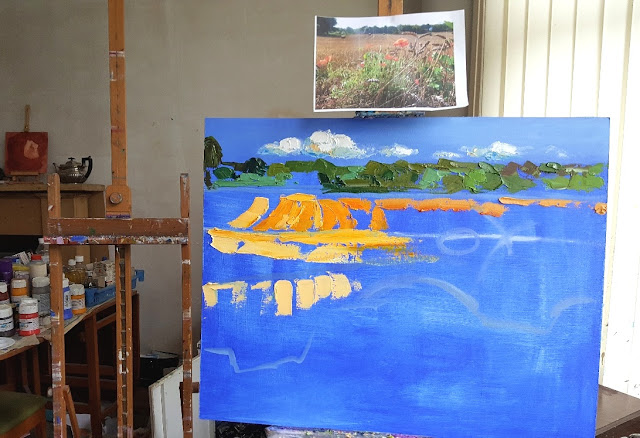The Festival Hall is like a groovy 1950s concrete space pod about to blast off into an outer space as designed by Lucienne Day, all spiky and sputniky - and tonight it was the setting for Steve Hackett and a 41 piece orchestra - yikes!
Now, I've seen the train crash that can result from rock 'n' roll meets classical - Yes versus Larry Grupe at the Hollywood Bowl is still seared onto my brain. So what was this going to be like?
Well...turns out...it's going to work out fine.
(Apologies for the out of focus photos. I was in the front row, but Kevin a couple of seats along was shoogling.)
Here's some of the Heart of England orchestra, and the camera guy filming the concert. At no point did the orchestra cause Steve to compromise in terms of tempo or the Steveness of the music - instead, it gave a depth and richness to it, and they fairly cracked along in terms of timing.
Steve and Nad.
Amanda Lehmann, Steve's sister in law, guested, singing on The Serpentine Song (one that's all about Steve's father and full of meaning for him) and Shadow of the Heirophant.
John Hackett, Steve's brother was also there. I saw him recently in Kinross with his band. (I left at half time.)
Nad is good in that he is dramatic enough to reference and echo the theatricality of the performance of Peter Gabriel, but without copying him. That's a tough thing to pull off.
Land of the giants!!
























